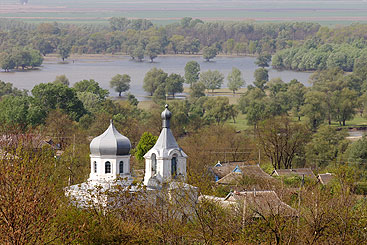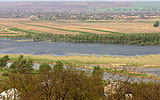Highlighting the stories of the Prut

Highlighting the stories of the Prut
The Prut River Basin comes into focus this year with greater attention from Ukraine’s ICPDR Presidency and the three Prut countries working together to create a sub-basin plan for the second-longest tributary of the Danube.

The Prut River begins on the eastern slope Mount Hoverla in the Carpathian Mountains of Ukraine, and for most of its length it serves as the border between Romania and Moldova.
The legend starts high in the mountains – where all rivers, real or legendary, begin. A young man named Prut falls asleep under a tree. He is awakened by a beautiful girl, named Hoverla, and they fall in love. But her father is the Mountain Tsar, and when he discovers their romance, he curses her. Unable to live without her love, she jumps from a high cliff. As she does, a terrible wind rises, whipping at the trees and landscape. When the dust settles, a large mountain stands in place of the valley. Prut hears Horverla’s voice calling to him from the mountain and runs off to join her, never to return. The mountain is ever after called Hoverla. And the river, of course, is the Prut.
So begins the legend of the Prut River, which really does begin on the eastern slope Mount Hoverla in the Carpathian Mountains of Ukraine. The river flows southeast to join the Danube near Reni, east of Galati. The Prut is the second longest and last major tributary of the Danube.
“Last but not least”, however, is the message from the ICPDR President, Mykola Melenevskyi. Melenevskyi plans to spotlight the Prut River during Ukraine’s presidency this year, and elevate the region to an area of particular attention. Melenevskyi will use his presidency to initialise preparation of the sub-basin river basin management plans for the Prut and Siret River Basins.
“Along with the Tisza, the Prut and Siret Rivers are among the most important international tributaries of the Danube,” says Melenevskyi, “embracing with their basins three European countries. These are the only basins of the Great Danube that do not have river basin management plans yet. Therefore, we will highlight the importance of river management development for the Prut and Siret.”
A plan for the Prut Basin. The Integrated Tisza River Basin Management Plan, due this year, has been a milestone for the ICPDR and the Danube Region. Experts from around the basin are working to achieve a similar success for the Prut.
“The Prut River Basin Management Plan will transform current, mainly water quality-oriented management into a more integrated approach of ecosystem management to fully meet other objectives of the EU Water Framework Directive,” says Tatiana Belous, Head of Moldova’s Delegation to the ICPDR.
The PRuT RIVeR basIN aT a glaNCe
| Length: |
953 km |
| Size of basin: | 27,500 km² (Ukraine: 8,300 km², Moldova: 8,200 km² and Romania: 11,000 km²) |
| Population: | Approximately 3 million |
| Largest cities: | Iasi, Romania Chernivtsy, Ukraine |
| Land use: | Predominately agriculture, with some industrial activity in Ukraine and Romania |
| Biodiversity: | The Prut River Basin’s variety of habitats makes it an important area for aquatic birds. |
Bringing practices together. To create a river basin management plan for the Prut Basin, countries will need to harmonise institutional and legislative practices to improve water management and the planning of new shared projects in the basin.
“Institutionally this process could be arranged akin to the Tisza Group,” says Melenevskyi. “The basic precondition of the success is a strong political will of the parties in reaching the goals of common interest.”
In addition, cooperation will be crucial between local authorities with relevant national, regional and international stakeholders and institutions – including financial institutions – involved in different areas of water management to implement the provisions of regional plans for social and economic development.
“It is clear that one single country will not manage to implement the Water Framework Directive alone,” says Dan Carlan, Head of the Romanian Delegation to the ICPDR. “Therefore, the most important steps required by the directive should be coordinated between the three countries, starting with the definition of the good water status and ending with a joint programme of measures.”
And of course, the large involvement of public institutions and NGOs in the region will be needed to prepare and integrated river basin management plan and a programme of measures for its implementation.

Working together for the future. International cooperation under the framework of the ICPDR has long been a priority along the Prut. While the river begins in Ukraine, with about a third of the catchment in the country, for most of its length it serves as the border between Romania and Moldova. The three countries, all contracting parties to the ICPDR, are working to strengthen cross-border cooperation and share the development of Prut River Basin Management.
“According to the preliminary assessment of ecological status, most of the water bodies of the Prut and Siret within Ukraine have a good status,” says Melenevskyi. However the experience of Romania in the development of its National River Basin Management Plan as an EU Member State “will be useful for Moldova and Ukraine for preparation of a comprehensive document”, says Melenevskyi.
All of these programmes and international attention on the area are helping to protect the river to ensure that its riches and beauty can be passed on to future generations, along with its legends.





